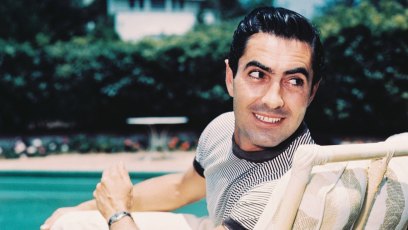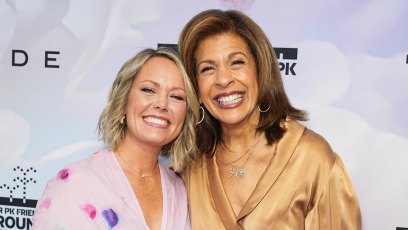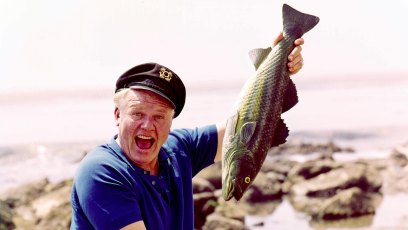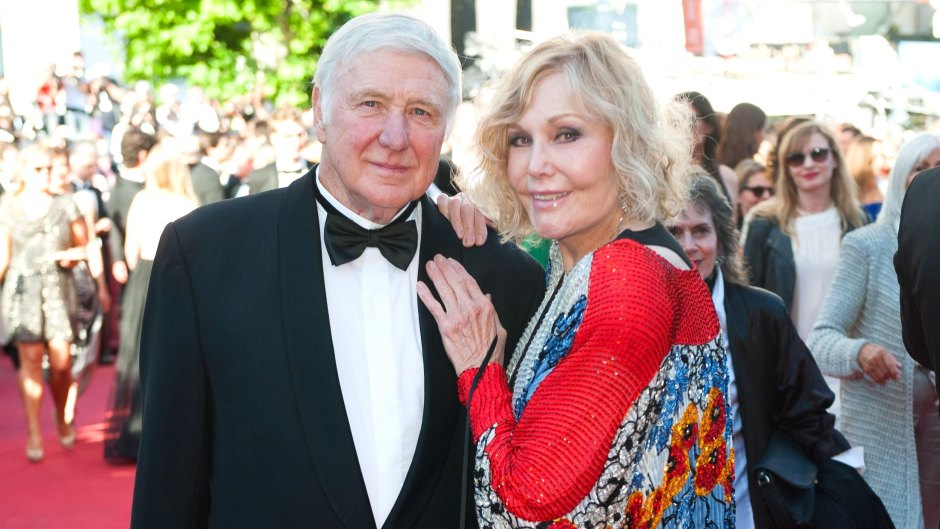
Florent Dupuy/Sipa/Shutterstock
Kim Novak Says She and Late Husband Robert Had ‘So Much in Common’: He Had a ‘Great Sense of Humor’
She bewitched some of Hollywood’s greatest leading men, from Jimmy Stewart
and William Holden to Frank Sinatra and Kirk Douglas. But after a little more than a decade as a leading lady, Kim Novak stepped away from acting.
“Show business was OK, but it was also frustrating because you were always compromising with someone else’s interpretation,” the star of director Alfred Hitchcock’s arguably greatest masterpiece, Vertigo, exclusively tells Closer Weekly, on newsstands now. “It’s nice to think I will be remembered for more than just being an actress.”
Starting in the mid-1960s, the Chicago-born beauty, 88, became a full-time visual artist and poet and has only accepted acting jobs occasionally. “Art is what saved me,” explains Kim, who shares with Closer how painting helped her deal with bipolar disorder and even soothed her grief over the recent death of her husband of 44 years, Robert Malloy. A book of her paintings and memories, Kim Novak: Her Art and Life, published by The Butler Institute of American Art, is out now.
How did your new book come about?
The Butler Institute asked me and I was excited to get my art out. I feel like I have something to offer that is special. I don’t paint for money. I do it to put myself out there and offer what I have learned over all these years. I am sharing my life and it feels really good.
Do you think your time in Hollywood influenced your art?
Sometimes. I was very influenced by Alfred Hitchcock because everything was a mystery [with him]. I also like to put a lot of mystery into my art. I was very lucky to have some very good people that influenced my life in show business.
Who were some of your favorite costars?
Well, Jimmy Stewart is in a category by himself. He was just so natural and so real. We got along fantastic. Bill Holden was quite an interesting person. It’s too bad he had such a bad drinking problem. He was a good person. I also loved [Jeanne Eagels costar] Jeff Chandler. He was the kind
of person who if you said, “I’ve got a taste for deli,” he’d say, “Let’s go get a pastrami sandwich.” He was a regular kind of guy.
Do you have a favorite role?
I love Picnic with Bill Holden. It was a story about down-to-earth, country people. I loved playing Madge. And of course Vertigo. I loved the idea of playing more than one character because I always feel like I have more than one side of me. Another favorite was Strangers When We Meet with Kirk Douglas. The director Richard Quine was wonderful. I also loved working with David Bowie [in 1978’s Just a Gigolo]. He was a wonderful person and I liked him a lot.
What caused you to leave acting?
I was feeling like I had enough, like I had to survive Hollywood. I liked working with
a good director that let you participate mentally, but [there were some] that just wanted you to accept what they felt about the character and never wanted to discuss it. I never worked well like that.
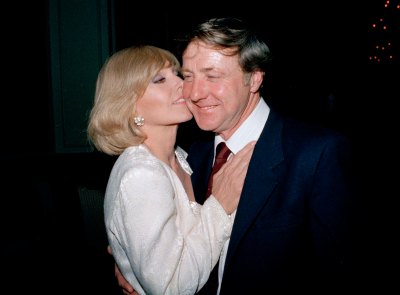
Was there ever a final straw?
Well, I had the idea of leaving a year before I did, but then we had a fire in Bel Air and I survived that. The following year, we had mudslides. The mudslide took my house, my furs, jewelry — it all rolled down the mountain and I watched it. I needed that extra push to walk away. It helped me decide what was important to take and what didn’t matter if I left it behind.
You’ve been open about being diagnosed with bipolar disorder.
I didn’t realize I was bipolar, but I knew I got depressed a lot and frustrated. [Hollywood] was very stressful for me. Today my work is appreciated as an actress, but back then the press [was] not always easy on actors. The art saved me. That is why it’s so important for me to talk to people and let them know how expressing yourself on canvas or paper, how important that is. It takes off that edge.
When were you first diagnosed?
Oh, I didn’t get diagnosed as bipolar until I moved to Oregon, so that is within the last 20 years.
How did being bipolar affect your work as an actress?
I think it sometimes was very helpful because you’re more expressive and you feel deeper. But it also affected it for bad because I was very sensitive. If someone came on the set and I could feel their apprehension, it really disturbed me. I had to work with a closed set because I could feel that negative energy. That made it hard for me.
Your husband Robert passed away in November. Has your art helped you process his loss?
Yes. It was just this Thanksgiving when he passed and right away I started painting his portrait. People thought that must be too painful, but it wasn’t. Working on his portrait — I gave him just that little bit of a smile because he had a wonderful sense of humor — it made me feel like he was there with me. Through art, I was able to bring him right into my studio.
You were married for 44 years. What was your secret to a happy marriage?
Bob’s secret was that great sense of humor. We also had a shared love of animals. We’d both ride our Arabian horses together.
I had been married once before, [to English actor Richard Johnson], but it didn’t suit me to be married to an actor. Bob and I shared so much in common.
Do you have any advice for people about finding the road to happiness?
I think to be happy, you have to know yourself. You have to know what you really want and what your values are. If you really pay attention to what makes you happy or sad, laugh or cry, that will tell you if what you are doing is right. It’s a matter of putting the pieces of the puzzle together.
What is next for you?
I feel like I am on a really good path and just want to stick to it. I’m very proud of my artwork. I don’t have my life partner to share it with, but I do have the whole world to share my art with. I’m not lonely in the same way that someone else might be.
— Reporting by Katie Bruno
For more on this story, pick up the latest issue of Closer magazine, on newsstands now.









